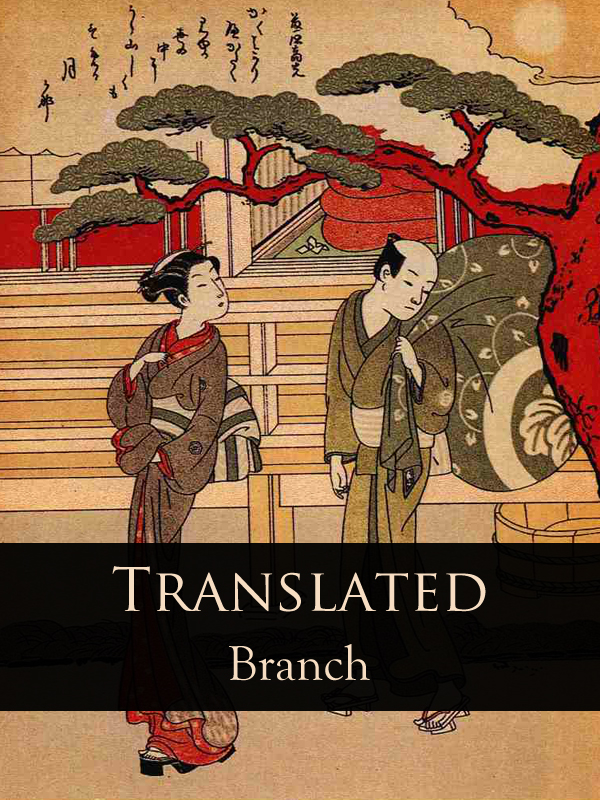The Translated arc is a retelling of the Prince of Tennis manga in the style of samurai stories.
It was inspired by my long-running frustration with the way Konomi draws on the tropes of the samurai story but sets them in the context of a shounen sports story. The two kinds of stories do not mix well, and character behaviors which would be explicable, and even poignant, in a samurai story become dissonant and even distasteful in a sports story. Echizen, for example, is a classic samurai figure: the character so brilliantly talented that he’s a little mad from it. That is not, however, the kind of character who makes a good sports hero, and the shape of journey Echizen needs to take is totally at odds with the journey of a good sports hero. Finally, egged on by my fellows, I decided to have done with it and write the tennis boys in the setting they so manifestly belong to.
This arc will not cover every single event in the tenipuri storyline. It will only touch on the key points that most fixed my attention. That will, however, cover most of the teams sooner or later.
Setting
The arc is set in the late Muromachi period, somewhere around 1480 to 1550. This is the Sengoku era, the time after the Ounin war, when centralized authority failed and many great overlords were overthrown. The great domains broke up and the land was claimed by the lesser samurai, the peasants, the monasteries who worked and lived locally. This was the era of constant small battles, border skirmishes month after month and year after year, when the number of retainers a lord could claim and soldiers he could support and mobilize was vital to who survived and who didn’t.
Thus, the tennis clubs become the body of various domain lords’ retainers, and the Regulars become the generals and captains among them.
Liberties
This is not intended to be historically accurate in every aspect. I am drawing as much on the, at best, semi-historical genre of Japanese samurai stories as on actual history. The places in which Konomi has already performed that same maneuver only complicate my attempts at historicity.
Among other things, Konomi drew many of his character names from actual clans and heroes of this period. Rather than attempt to contort the plot around those facts, I have simply omitted any reference to the historical Sanada or Tachibana or Echizen clans and let the characters keep their names in their fictional situations.
For another thing, all the tenipuri characters get to keep their hair, rather than be partially shaved for a fasionable samurai coiffure. In this, it seemed best to follow common practice for demi-historical manga and anime rather than cause my readers to snarf their drinks all over the screen while trying to envision Tezuka with a proper period head-shave, moustache and topknot.
The historical aspects that I have used directly, such as the Takeda and Uesugi rivalry, are intended to echo, rather than precisely reproduce, actual historical events. In many cases I have considerably compressed, stretched or altered the timeline of events which did occur, historically.
Similarly, I have moved around some of the events and, more importantly, realizations within the tenipuri timeline to accommodate things like the lack of inter-domain travel and the segregation of the sexes. Sakuno would not, for example, be on a battlefield to intervene when Echizen is injured, but she can gain the same understanding of his determination in other ways.
I have assumed a much larger age range for the tenipuri characters, as well. The third years are now in their late twenties and early thirties and the second years in their twenties, generally. Echizen is about sixteen, as our story opens.
In other words, they are the ages they act, now.
Needless to say, a certain amount of fudging has been done to keep the fatalities down among the major characters.
Titles
I have used period, rather than modern titles, which I realize may set some readers off their strides. Most of them should be clear in context, but for those who would like a separate definition:
-sama/-dono: these were the titles of common courtesy, used both with peers and superiors. The usage is roughly equivalent to the modern-day -san.
-gimi or no kimi: two forms of the same title applying to a landed warrior or noble. Used in pretty much the same way as -dono.
Taishou/bushou: General. Bushou is a broader word for it, while Taishou is more personal and specific, and more particularly exalted as a title.
Taii: Captain. A sub-commander within the ranks of a clan’s samurai.
-hime: used for a woman or girl who is well born, as, for example, a member of a domain lord’s family. A girl from the lower ranks of the warrior class might be called ojou-sama by her inferiors (or ojou by a superior who’s being kind), or simply Name-dono.
-gozen: a title used to address a woman of rank. Initially an address for noble women, by this late in the period it was shifting toward an address for the wives of samurai.
Tono/Oyakata-sama: terms for one’s own domain lord, the ruler to whom one owes allegiance or fealty. Note that Tono is the direct-address form of -dono.
Domainname no Kami: title of the lord of a domain, such as might be used to refer to him in conversation. Eg the Uesugi clan lord would be Echigo no Kami when the Takeda generals are talking about him.
These are only a fraction of the titles actually in use during this time period, of course. Rather than pull out the whole bewildering array, I have picked out a few of the most common for the sorts of situations the characters find themselves in.
